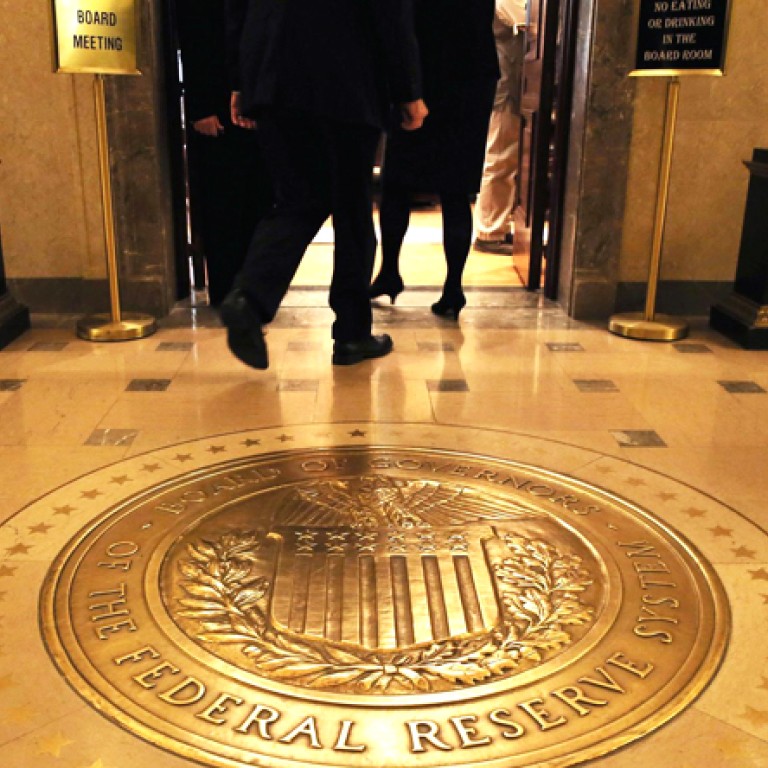
Liquidity swell to spill into 2014
World markets are now awash with cash again after the weakening dollar increases the chances of further easing by central banks
After a bone-dry summer, world markets seem awash with cash again and it looks like spilling into next year.
Although the US Federal Reserve has kept its US$85 billion a month of bond buying constant throughout, speculation surrounding its easy money spigot has by itself dictated the ebb and flow of liquidity seen this year.
The rethink of Fed intentions after September 18, when the central bank declined to cut back its asset purchases as expected, has raised all financial boats in one big wave.
Since the Fed demurred six weeks ago, the S&P 500 Index has jumped 3.5 per cent. So, too, have 10-year US Treasury bonds. High-yield corporate "junk" bonds are also up more than 3 per cent, as are gold and the euro. Even indices of the most speculative "frontier markets" have added more than 3 per cent.
The global surge has been remarkable as an evaporation of the US dollar's gains this year has removed huge pressure from emerging-market currencies and, in turn, eased the strain on about US$7.2 trillion of emerging central bank reserves. And given that these reserves are largely banked in Western bonds, a virtuous circle of liquidity appears to have formed.
And by pumping up the euro and the yen, the retreating dollar has lifted chances of further easing - quantitative or otherwise - by the Bank of Japan and the European Central Bank.
The global liquidity pool, one seeded by central banks and supercharged by the markets themselves, seems to expand anew.
Major stock markets have now clocked up year-to-date gains of 20 to 30 per cent and the latter two are in uncharted territory. Property hotspots in many of the same locales are similarly motoring.
Is this the mirror of the financial bubble that blew up pre-2007, as long-term bears such as Societe Generale's Albert Edwards insist it is?
With huge amounts of spare capacity still across developed labour markets and economies and little or no sign of rising inflation, policymakers seemed unperturbed.
But scale of money building up appears very real.
JPMorgan analysts reckon investor flows behind the latest market surge are akin to the equity and bond buying seen at the start of the year before talk of Fed tapering saw an equity bias emerge as many funds fled bonds and the economy sped up.
More "asset reflation" than "great rotation" this time round, they surmise.
To be sure, US mutual fund data from Thomson Reuters' Lipper showed that last week alone there were hefty net inflows to equity, bond and money funds alike - more than US$11 billion net to domestic equity, almost US$5 billion to overseas equity and more than US$3 billion to all taxable bond funds.
So what is the scale of this global sea of liquidity?
JPMorgan splits the notion of liquidity into two buckets: one looks at how the banking system absorbs and distributes new quantitative easing money from central banks and another is the broad view of money supply in the wider economy.
The former can be febrile, as we saw during the summer.
When the central banks pump in new zero-yielding money, or excess reserves to the banking system, the banks just buy bills and bonds from other banks as the money gets passed around like a "hot potato", bidding up asset prices and depressing yields.
That is until policy uncertainty lifts interest rate volatility and threatens bond prices, as it did after May, and forces those "excess reserves" to go to ground and hunker down in cash again until the coast is clear.
With the Fed speaking softly again, one-month US Treasury bond volatility indices have fallen to their lowest since May.
On one level, it shows the power that policyspeak alone still has in controlling this money and many argue the stretch for yield during the first four months of the year prompted the Fed to deliberately fire its verbal shots across the bow.
The other measure of global liquidity, however, appears positively explosive.
JPMorgan estimates its measure of "excess liquidity" in the global system is still surging into record territory, with global M2 aggregates up by US$3 trillion, or 4.6 per cent, so far this year - far outstripping a 2 per cent global inflation rate.

